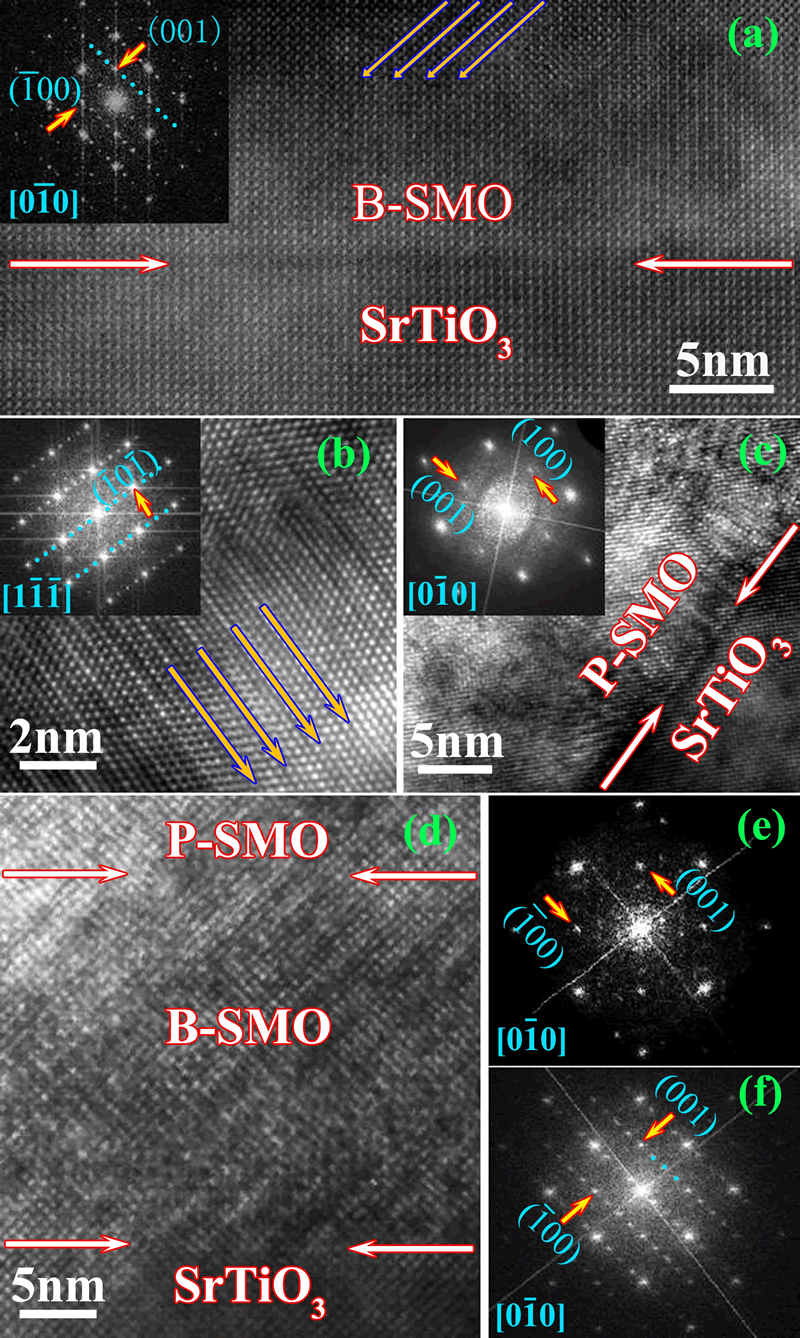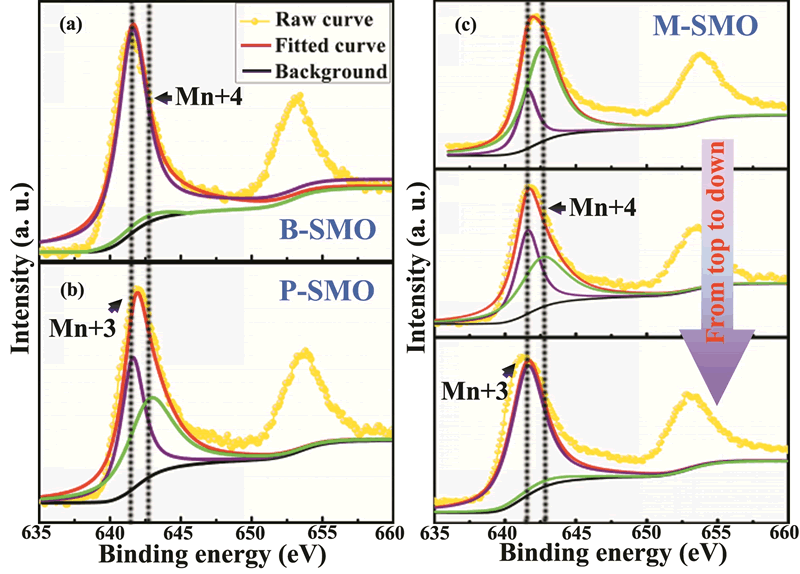
Oxygen vacancy formation, crystal structures and magnetic properties of three SrMnO3-¦Ä films |
|
It is well known that oxygen vacancies have an important influence on magnetic multiferroic properties and electrochemical properties of transition metal complex oxides (ABOX). The SrMnO3 film has been intensively investigated as a typical transition metal oxide. The crystal structures and magnetic properties of 40 nm superstructure SrMnO2.5 film, perovskite SrMnO3-¦Ä film and mixed-phase film have been systematically investigated. The features of oxygen vacancy ordering superstructure SrMnO2.5 film are observed from HRSTEM as the following: the dark stripes with a periodicity of four (110) planes of the cubic perovskite appearing at an angle of 45o with the substrate-film interface and extra reflection spots in FFT patterns along the (001) plane. When annealing superstructure SrMnO2.5 film under higher oxygen pressure, the top portion undergoes structure transition into perovskite SrMnO3-¦Ä as seen in the mixed-phase film consisting of perovskite SrMnO3-¦Ä phase dominating at the top part and superstructure SrMnO2.5 phase dominating at the bottom part. The magnetic properties and Mn valences of the superstructure SrMnO2.5 film indicate that this film, similar to bulk, is antiferromagnetic with TN at 375 K. However, the strained tetragonal perovskite SrMnO3-¦Ä film exhibits ferromagnetic behavior with Curie temperature at 75 K and saturation magnetization of 2.5¦ÌB/Mn at 2 K. Moreover, the top perovskite SrMnO3-¦Ä phase of the mixed-phase film also exhibits ferromagnetic behavior evidenced by the existence of the exchange bias. We propose that the ferromagnetic properties in both perovskite SrMnO3-¦Ä film and top perovskite SrMnO3-¦Ä phase in the mixed-phase film originate from Mn3+-Mn4+ double exchange coupling. However, the formation of Mn3+ differs for the two samples in that it is caused by oxygen vacancies in the former and the distribution of oxygen content across the film during annealing in the latter.
Fig. 3. (a) Cross-section HRSTEM image of superstructure SrMnO2.5 (B-SMO) along direction [0-10] zone axis of substrate SrTiO3. The inset is the fast Fourier transform of B-SMO film; The Cross-section HRTEM image along different direction zone axis of substrate SrTiO3. (b) B-SMO [1-1-1] zone axis (c) perovskite SrMnO3-¦Ä(P-SMO) [0-10] zone axis and (d) Mix-phase (M-SMO) [0-10] zone axis. (e) and (f) Fast Fourier transform patterns of the P-SMO and B-SMO phases in the M-SMO film respectively.
Fig. 3 (a) and (b) Mn 2p3/2 spectra of the superstructure SrMnO2.5 (B-SMO) film and perovskite SrMnO3-¦Ä (P-SMO) film at surface, respectively. (c) Mn 2p3/2 spectra of the Mix-phase (M-SMO) film from surface to the film/substrate interface.
|
|

